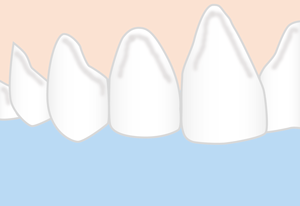Biology Class 11: Why Teeth Matter And How To Fight Tooth Decay
Teeth are small but powerful tools present in your mouth. The visible part of the teeth is only a third of its total size; the remaining two-thirds are embedded in the sockets of the jaw bone. Teeth are superbly anchored!

Try to see your teeth in the mirror or touch them with your tongue. Every tooth will appear different. Some might be sharper than others, some round, some flat and so on. These varying shapes are due to different functions of each tooth. The flat teeth are the front teeth known as ‘incisors’ and these help in cutting the food (so the word incisor sounds similar to scissor). The sharp teeth next to incisors are the ‘canines’ that tear the food particles. Next to it are the main grinding teeth, the ‘premolars’ and ‘molars’
Humans are lucky to have two sets of teeth in a lifetime. The first set is known variously as baby teeth, primary teeth, deciduous teeth or milk teeth. The second set is permanent teeth although this does not mean they are actually permanent. Milk teeth are 20 in number while permanent teeth are 32.
According to folklore, baby teeth are called milk teeth because it was believed that children get teeth after they feed on their mothers milk. This is a myth as baby teeth in fact start forming while the child is still in the mother’s womb. These are referred to as milk teeth as they are milky white and that is because the refractive index of teeth is similar to that of milk — they reflect the same amount of light as milk.
Permanent teeth develop later in life and remain in the mouth for long and there are 12 more of them than milk teeth. These are precious as once gone, they can never be replaced. These are off-white in colour.
Mouth is the window to your overall health. This means teeth are precious and hence caring for them and guarding against tooth decay is of utmost importance.
Dental Hygiene
For the majority, brushing twice a day is the only way to take care of your teeth. Well, this is important but this is the least that should be done. Brushing, once as you wake up in the morning and again before going to bed, is essential for removing germs and dental plaque from your teeth.
But how you brush your teeth as well as some other practices are critical. Let us focus on other ways to keep your mouth healthy
Technique of Brushing
The way you brush is important and if you don’t do it right, it’s as harmful as not brushing.
Place your brush at 45 degree to the gums
Slowly move the brush back and forth in short strokes
Do not apply high pressure as this might affect the enamel
Brush the inner surfaces of teeth also. For this, the brush is placed vertically
Do not forget the tongue. Give it a scrub with the brush or use a tongue-clearner.
B) Type of Brush
Depending on the stiffness of the bristles, toothbrushes are extra-soft, soft, medium or hard
Soft brushes are considered the best as these are not rough on the gums and enamel and recommended for those who apply high pressure.
Medium brushes are good too but there are chances of gum abrasion
Hard brushes are not recommended for normal brushing as these might affect the gums health. These are used to remove hard stains only
If you have sensitive teeth or your enamel is badly abraded, extra soft bristles are recommended
Change your toothbrush every 3 months or when you see the bristles are eroded
C) Toothpastes
Use any flavor or brand but make sure your toothpaste has ‘fluoride’ in it
Fluoride is the natural decay-reducing agent
Only children less that 2 years should be brushed with non-fluoridated toothpastes
D) Mouthwash
Using mouthwash daily is a great addition to your oral health routine
It freshens the breath and also kills harmful bacteria
E) Flossing
Brushing cleans the surface of the teeth but flossing cleans the gaps between the teeth where bacteria can reside
The technique should be properly understood
Visit your dentist to learn proper way to floss
Remember ‘Every tooth deserves to be flossed’
F) Dental visits
Visit your Dentist every 6 months for scaling and polishing as teeth deserve special treatment at times
Remember these ways are quick and feasible and thus overall oral health can be maintained. Afterall, ‘Behind every smile, there’s teeth’
